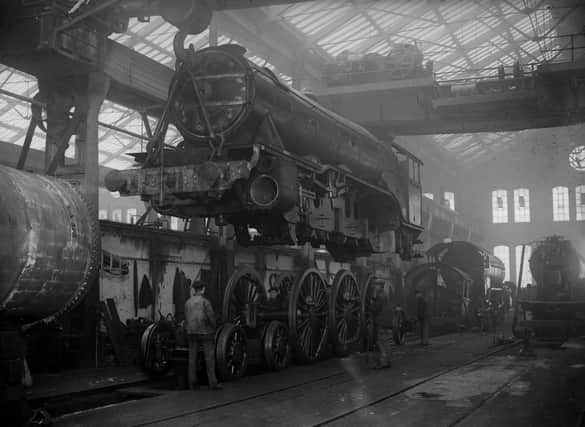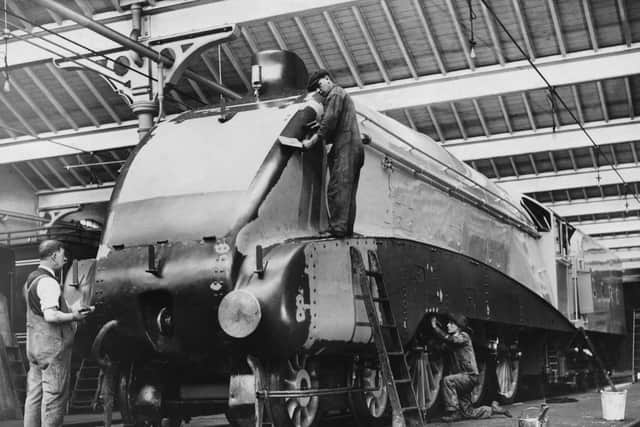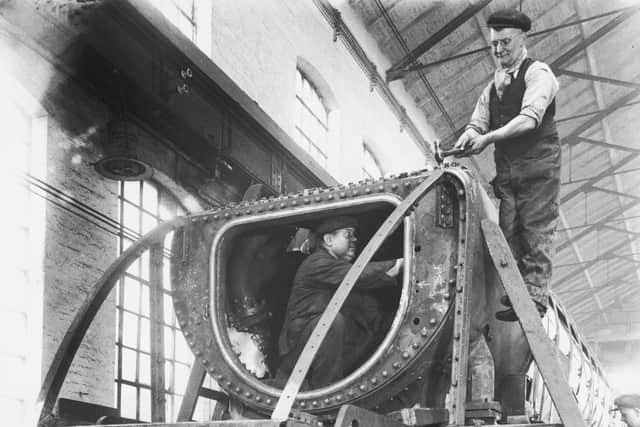Rare pictures show how Mallard and Flying Scotsman defined Doncaster


Train carriages took over where the horse-drawn variety left off, and the route of the old Great North Road – later the A1 – was roughly where the first rail companies laid the track that forms the main line to this day.
The first locomotive and carriage building works were opened on the outskirts of the town in 1853, by the Great Northern Railway, as replacements for yards in Boston and Peterborough. By 1891, around 100 locomotives a year were being produced there and by the time steam production ended in 1957, more than 2,000 had been turned out.
Advertisement
Hide AdAdvertisement
Hide AdThe Scottish engineer Patrick Stirling was the first of Doncaster’s railway greats, turning out his “Stirling single” locomotive which could haul up to 26 passenger carriages and which at the turn of the last century achieved speeds of more than 60mph.


But it was in the next decades that the names which would stand as enduring symbols of the steam age were forged. Sir Nigel Gresley, the most famous railwayman of them all, made Doncaster the design centre for the newly-merged London and North East Railway, and Flying Scotsman – the first locomotive to reach 100mph – became its standard bearer.
In the 1930s Doncaster gave birth to Gresley’s crowning achievement, the new class of A4 locomotives – one of which, Mallard, managed to clock 126mph, a steam record that remains unparalleled to this day.
The steam age has long gone but Doncaster’s importance to the rail industry remains, and today it is home to the National College for High Speed Rail.
Advertisement
Hide AdAdvertisement
Hide AdEditor’s note: first and foremost - and rarely have I written down these words with more sincerity - I hope this finds you well.


Almost certainly you are here because you value the quality and the integrity of the journalism produced by The Yorkshire Post’s journalists - almost all of which live alongside you in Yorkshire, spending the wages they earn with Yorkshire businesses - who last year took this title to the industry watchdog’s Most Trusted Newspaper in Britain accolade.
And that is why I must make an urgent request of you: as advertising revenue declines, your support becomes evermore crucial to the maintenance of the journalistic standards expected of The Yorkshire Post. If you can, safely, please buy a paper or take up a subscription. We want to continue to make you proud of Yorkshire’s National Newspaper but we are going to need your help.
Postal subscription copies can be ordered by calling 0330 4030066 or by emailing [email protected]. Vouchers, to be exchanged at retail sales outlets - our newsagents need you, too - can be subscribed to by contacting subscriptions on 0330 1235950 or by visiting www.localsubsplus.co.uk where you should select The Yorkshire Post from the list of titles available.
Advertisement
Hide AdAdvertisement
Hide AdIf you want to help right now, download our tablet app from the App / Play Stores. Every contribution you make helps to provide this county with the best regional journalism in the country.
Sincerely. Thank you.
James Mitchinson, Editor
Comment Guidelines
National World encourages reader discussion on our stories. User feedback, insights and back-and-forth exchanges add a rich layer of context to reporting. Please review our Community Guidelines before commenting.